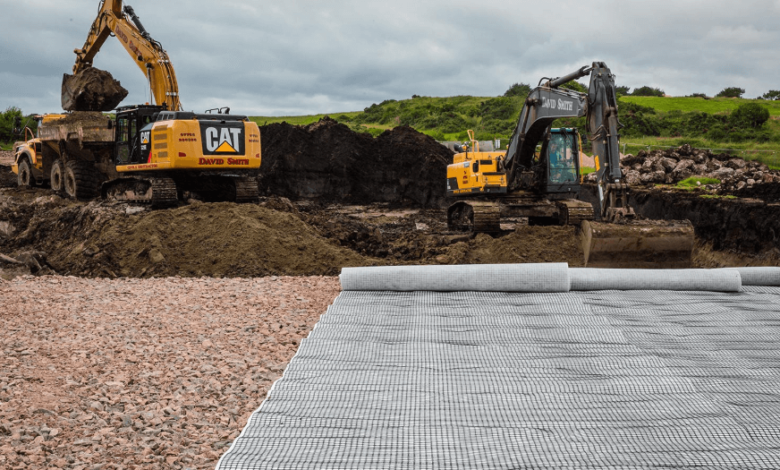Geogird: A Game-Changer in Soil Reinforcement

In modern construction and civil engineering, ground stabilization plays a key role in ensuring long-lasting structures. One innovative product making significant impact in this area is the geogird. Although often confused with its correctly spelled counterpart “geogrid,” the term “geogird” is frequently used online by those seeking soil reinforcement materials. Regardless of spelling, the product refers to the same high-strength, mesh-like material used to reinforce soil, roadbeds, slopes, and walls.
This article will explore what a geogird is, how it functions, the different types available, its benefits, and where it’s used. Whether you are a contractor, an engineer, or simply curious, this guide offers a detailed explanation of everything you need to know.
What Is a Geogird?
A geogird is a synthetic reinforcement material made from polymers such as polyester, polypropylene, or polyethylene. It is manufactured in a grid or net-like pattern with apertures (holes) that allow soil or aggregate particles to interlock with the structure. This interlocking creates friction and confinement, helping to stabilize weak or shifting soils under pressure.
The geogird is laid into the soil or other fill materials, forming a composite layer that improves structural integrity. Its design enables better load distribution, minimizes deformation, and enhances the durability of construction projects.
See also: Embracing Simplicity: The Art of Contemporary Home Decor
Types of Geogird
Understanding the types of geogird is essential in choosing the right one for your project. Each type is engineered to handle specific kinds of stress and load directions.
1. Uniaxial Geogird
These are made to be strong in a single direction—usually the roll direction. They’re ideal for reinforcement in retaining walls, embankments, and slopes where force is applied in one dominant direction.
2. Biaxial Geogird
This type offers strength in both longitudinal and transverse directions. It is suitable for soil stabilization under roads, parking areas, and other ground surfaces requiring uniform load distribution.
3. Triaxial Geogird
A relatively recent innovation, triaxial geogird provides multi-directional strength. It features triangular apertures that allow load dispersion in several directions at once, making it ideal for high-performance applications.
How Geogird Works
The effectiveness of a geogird lies in its structure. Once it is embedded in soil or granular fill, the material being used surrounds the open spaces of the grid. This results in a “lock and hold” mechanism that resists movement and provides extra strength.
The key working mechanisms include:
- Confinement: Geogirds restrict the lateral movement of soil particles.
- Frictional Resistance: The geogird creates friction with surrounding materials, helping transfer loads efficiently.
- Improved Load Distribution: It spreads heavy loads over a broader area, reducing stress concentration on weak soils.
In short, a geogird transforms weak soil into a stable foundation.
Applications of Geogird
The use of geogird is widespread and versatile. It is found in both small landscaping projects and large-scale civil engineering operations.
Road Construction
Geogirds are commonly installed beneath roads and highways to prevent rutting and subsidence. They improve bearing capacity and minimize the amount of base material needed.
Retaining Walls
In retaining wall construction, geogirds are placed between layers of compacted backfill to increase wall height and reduce the need for bulky wall blocks.
Slopes and Embankments
When building on or near slopes, geogirds are used to prevent soil erosion and slope failure. They reinforce the soil, reducing the risk of landslides.
Railway Ballast
Railways benefit from geogirds under ballast layers to maintain track stability, especially under dynamic and repeated loads.
Parking Lots and Driveways
Smaller projects like parking areas or driveways can use biaxial geogird to reduce settlement and extend surface life.
Landfills
Geogirds help stabilize the base and side slopes of landfills, preventing collapse and leakage of waste materials.
Benefits of Using Geogird
The advantages of using a geogird in construction and landscaping are numerous. Here are some of the most significant:
1. Cost Efficiency
Using a geogird reduces the need for high-quality fill materials, lowering overall project costs. It also decreases the depth of excavation required.
2. Long-Term Durability
Geogirds are chemically inert and highly resistant to UV rays, water, and environmental degradation, making them suitable for long-term use.
3. Easy Installation
Their lightweight nature and flexible structure make geogirds easy to transport and install on-site, speeding up project timelines.
4. Improved Safety
By reducing the chances of ground failure, geogirds contribute to the structural integrity and safety of buildings, roads, and slopes.
5. Eco-Friendly
Geogirds promote sustainable construction by minimizing resource use, reducing emissions, and enabling the use of recycled fill materials.
Geogird vs. Geotextile
While often used in similar contexts, geogird and geotextile materials serve different purposes. A geotextile is a fabric-like sheet used for filtration, separation, and drainage, whereas a geogird is a structural material focused on reinforcement.
| Feature | Geogird | Geotextile |
| Structure | Grid-like with apertures | Fabric-like with small pores |
| Main Function | Soil reinforcement | Filtration and separation |
| Load Handling | High | Moderate |
| Common Use | Roads, slopes, walls | Drainage systems, erosion control |
Innovations in Geogird Technology
As construction demands evolve, so do geogird products. Innovations in this space include:
- Smart geogirds with embedded sensors for real-time stress monitoring.
- Biodegradable geogirds for temporary projects with environmental considerations.
- Recycled geogird materials aimed at promoting circular economy practices.
These developments reflect the industry’s push toward sustainability and smarter infrastructure design.
Final Thoughts
The increasing popularity of the term geogird whether from typographical errors or SEO targeting—does not detract from the immense value of the product itself. A geogird, regardless of spelling, is a powerful reinforcement tool that brings stability, durability, and cost-effectiveness to a wide range of construction projects.
From high-traffic highways to simple backyard landscaping, geogirds have become essential in modern ground engineering. Their ability to improve soil performance while reducing construction costs makes them a preferred choice for builders and engineers alike.





